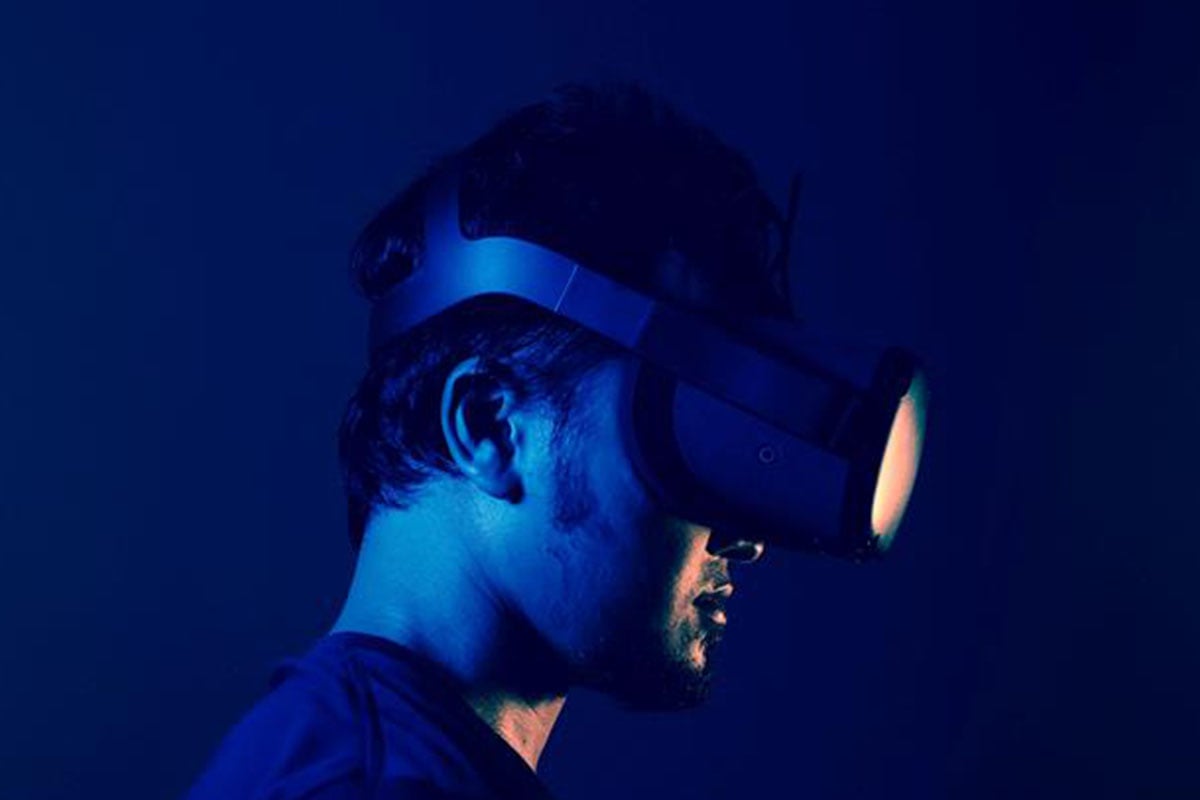Attraction / Talking Brand: re-thinking the office and employee experience

William Geldart
June 8, 2020
Understandably, there’s a lot of future-gazing going on right now. And if employer brand and employee experience were hot topics pre-Covid-19, the current global situation has only served to intensify the spotlight.
We’re all wondering what this ‘new normal’ we keep hearing about will result in. For many, there’s a belief that our professional lives, the way work is carried out and the manner in which businesses operate will never be the same again.
But what does this mean for employee experience? As I took my customary walk around the block last weekend, I started thinking about how this could change.
In keeping with the opening gambit, if employees’ expectations hadn’t already begun to swing in a new direction, I expect these to change dramatically in the next few years.
The slowly shifting sands of professional life
Since the advent of mass consumerism in the developed world, what’s really changed about how we do work?
In the 1950s and 1960s a new middle class emerged. A generation fed-up of the hardship and misery wrought by two World Wars. Desperate to shake-off their predecessors’ hang-ups, Baby Boomers were ready to lead new lives.
They held achievable aspirations. They wanted to own their own homes, cars, and appliances designed to make their lives easier.
However, while there were these trappings to enjoy, the physical act of going to a place of work remained a constant. Likewise, a familiar work-life pattern emerged. People went to work, slotted into an organisational design, performed time and skills-based tasks for money, and then came home again.
So, what’s new?
Sure, we have the Internet, fancier cars, entertainment in abundance, connected devices and all that good stuff.
But by and large, we’re still embarking on strenuous commutes and the notion of ‘the workplace’ remains a staple.
If anything, the insatiable lust for continuous growth and productivity has merely served to blur the boundaries between our professional and personal lives.
In that respect, you could argue that for the sake of our sanity - and the environment - something had to change in the professional domain.
The death of the office
The forced shift to home working has led to much commentary around the future of the office.
High-profile businesses such as Twitter announced they’ll allow their employees to work from home indefinitely.
Meanwhile, Economist writer Catherine Nixey put the issue front of centre in her article titled ‘Death of the Office’.
Nixey chronicles the history and purpose of the modern office as we know it. She highlights the 19th century example of the East India Company’s attempts to build a well-oiled machine. As a counterpoint, Nixey also cites time and motion studies that illustrate the lack of efficiency within the office environment.
And the story goes on. Office patriarchy, stale design and the perilous effect on our physical and mental health all get the full treatment.
Until the tone changes.
Nixey’s closing sentiment touches upon the comfort we find in the routine of the office.
She writes: “Humans need offices. Online encounters may be keeping us alive as social beings right now, but work-related video meetings are too often transactional, awkward and unappealing.”
While we may grumble and sometimes even resent the conformities of being in a pre-defined space, we still desire a meeting point of minds and people.
This strikes at the heart of employee experience and the chain of interaction: how we interview, who we meet, the awkward walk-around on the first day, to where and how we spend our tenure with a particular organisation.
Physical or virtual, the office and our employee experience is changing irrevocably.
AR and the future state
In the US alone, there’s been a 159% increase in remote working jobs since 2005.
Research by Gallup backs up the effectiveness of remote work and the positive impact it can have on performance and engagement.
However, this doesn’t necessarily mean those of us who’ve been forced to take to our spare rooms, kitchen tables, or otherwise, will wish to remain there forever.
In an interview published as part of our Perspectives series, David Smith offered up a blended view of the future of work.
The Chief Executive of Global Futures and Foresight told us: “What does the future of work look like? Following the pandemic, it’s a mixture of remote and local working - but businesses should be encouraging their staff to do the human things when they come into the office. Don’t just sit at your computer and send emails. Instead, spend time with your co-workers, look to do team building exercises, and invest in your culture.”
No ball pits and slides perhaps, but the tone is very much that the office will cease to become a place for the day-to-day. Instead, companies will use the spaces they occupy for human interaction and a breeding ground for ideas and bonding.
However, how do we go even further beyond the contrived and hard-set notion of the office?
How can we imagine and create engaging spaces that can be adapted to whatever parameters we choose?
Enter stage right, Augmented Reality (AR).
AR has been talked about for a few years now and innovative use cases have already been publicised.
Boeing has implemented AR to help engineers install electrical wiring on aircraft. Engineers are provided with real-time, hands-free, interactive 3D wiring diagrams to work from.
Meanwhile, 81 per cent of nurses who used the AR solution provided by AccuVein said that the deployment of AR by the medical device company resulted in an improved ability to cannulate.
Cool stuff, but back to the office.
Stefano Manganini of creative agency Forefront International remarked to Workspace.co.uk:
“The office space itself is going to become less and less relevant. What’ll become increasingly relevant, however, is the connection the workspace is able to give you to the rest of the world.”
AR will have the potential to transport an individual to a completely different space of their choosing.
It’s ‘goodbye’ beige open-plan office and ‘hello’ personalised workplace.
However, this vision of the future will not merely provide a quirky backdrop and desk. Virtual Reality (VR) and AR will drive business efficiencies and impact upon the candidate experience.
Imagine you’re conducting an interview and your candidate has the ability to consume supplementary information about your company within an immersive environment. Or better still, you’re able to gamify the entire interview and assessment experience to help better identify key skills. More on that shortly.
If this all seems a little pie in the sky, it’s not.
During the current pandemic, creative agency Visualise have developed an AR portal app that the team can use to ‘access the office’.
Employees enter through a virtual door to make their return in XR (cross-reality).
Henry Stuart, CEO and founder, told Prolific North: ““The idea is that through that portal can be anything - the real world, but also fantastical and completely imagined computer-generated locations.”
Meanwhile, our friends &ranj specialise in gamifying the employee experience to enhance assessment, remote learning and collaboration.
Their product, Take 5, enables leaders to learn and develop their skills in bitesized chunks.
What next for the different stages of employee experience?
If the future of employee experience will involve a blend of environments, including the office, remote, and potentially VR/AR, what should we expect to see?
Virtual hiring and onboarding have been embraced in the absence of in-office interaction.
This accelerated shift is welcome and will lead to further developments. AI will continue to help refine video interviewing and get better at detecting bias and identifying desired skills. Video-conferencing tools
And in the future state, anything seems possible:
- The interview in an imagined place. Beneath the Eiffel Tower sounds good?
- Meeting your manager. Boundaries won’t matter. The business of the future will be able to hire and manage remote employees with full confidence.
- Collaborating with colleagues. No office? No problem. Solve problems together in virtual environments.
- Onboarding and training. Delivered anywhere, anytime via video and AR/VR.
- Lunchtime hangouts. Do something different from the everyday.
- 1:1 check-ins. AI and cognitive computing will be able to detect employees’ emotions.
- Team bonding exercises. In-person or remote, bring your team to a place of your choosing.
If it wasn’t already, societal change and technological innovation are redefining our concept of place, time and the working environment.
We’ll always crave human interaction and a place to share ideas. But the way this happens is destined to change forever and dramatically impact upon the employee experience.
I'll be talking about how to create and measure an authentic EVP, and the Future of Work, from 10am UK time on June 17. Come join me and other experts as we share insights from over 100 HR leaders and discuss the strategic importance of an EVP, how to measure it and more around gamification and the future of employee experience.
Sign-up here: https://www.inhouserecruitment.co.uk/event/creating-and-measuring-an-authentic-and-engaging-evp/.


